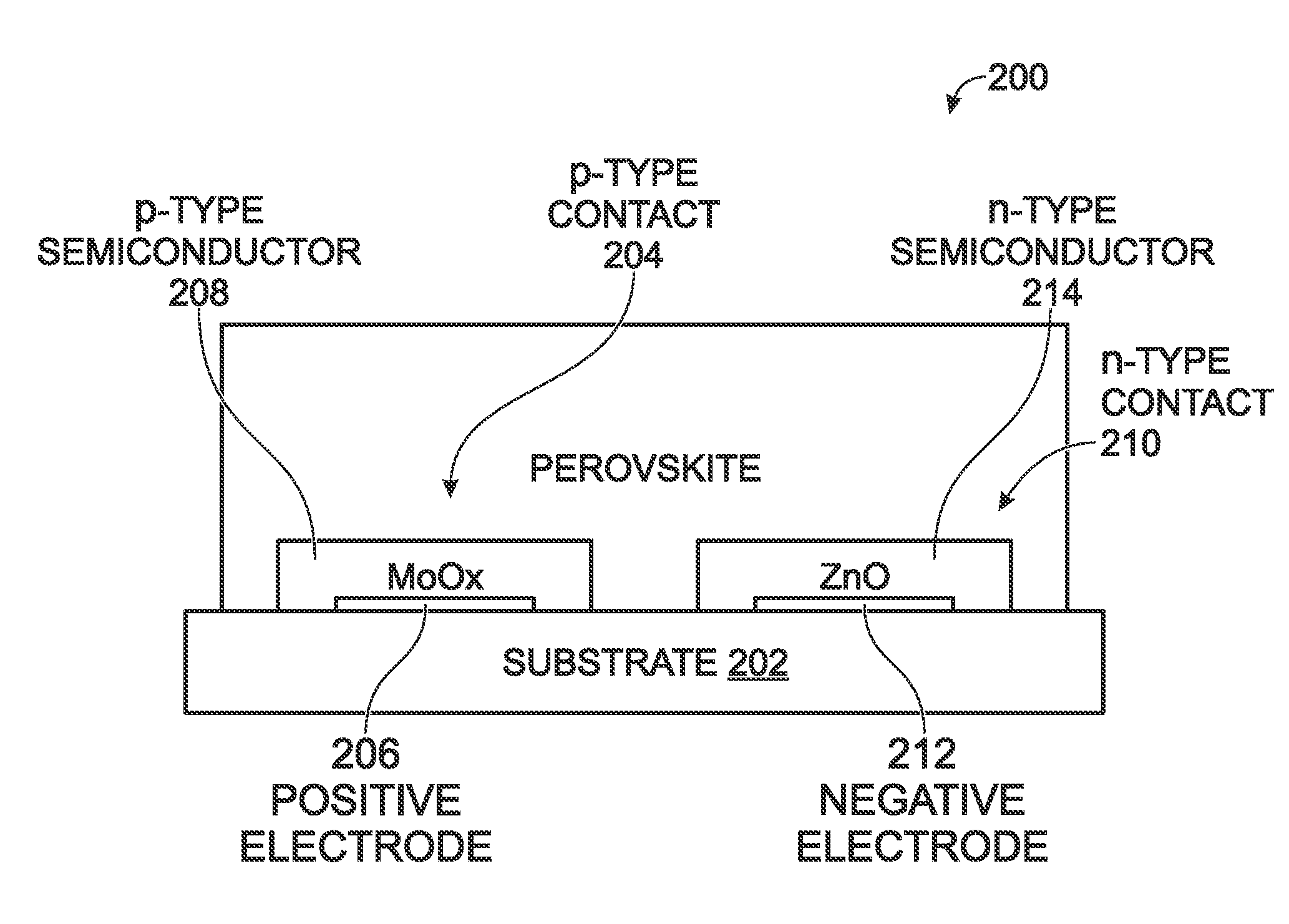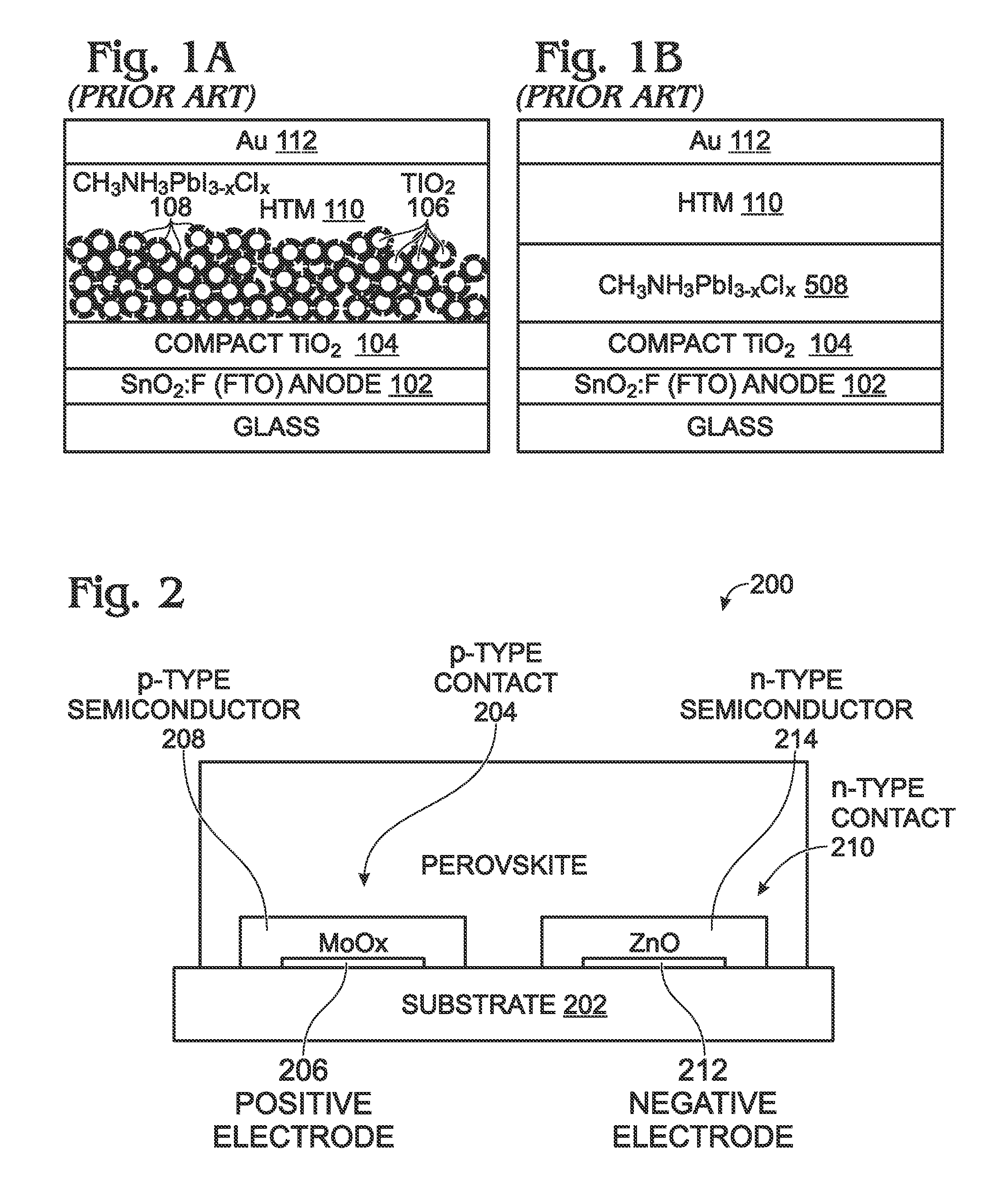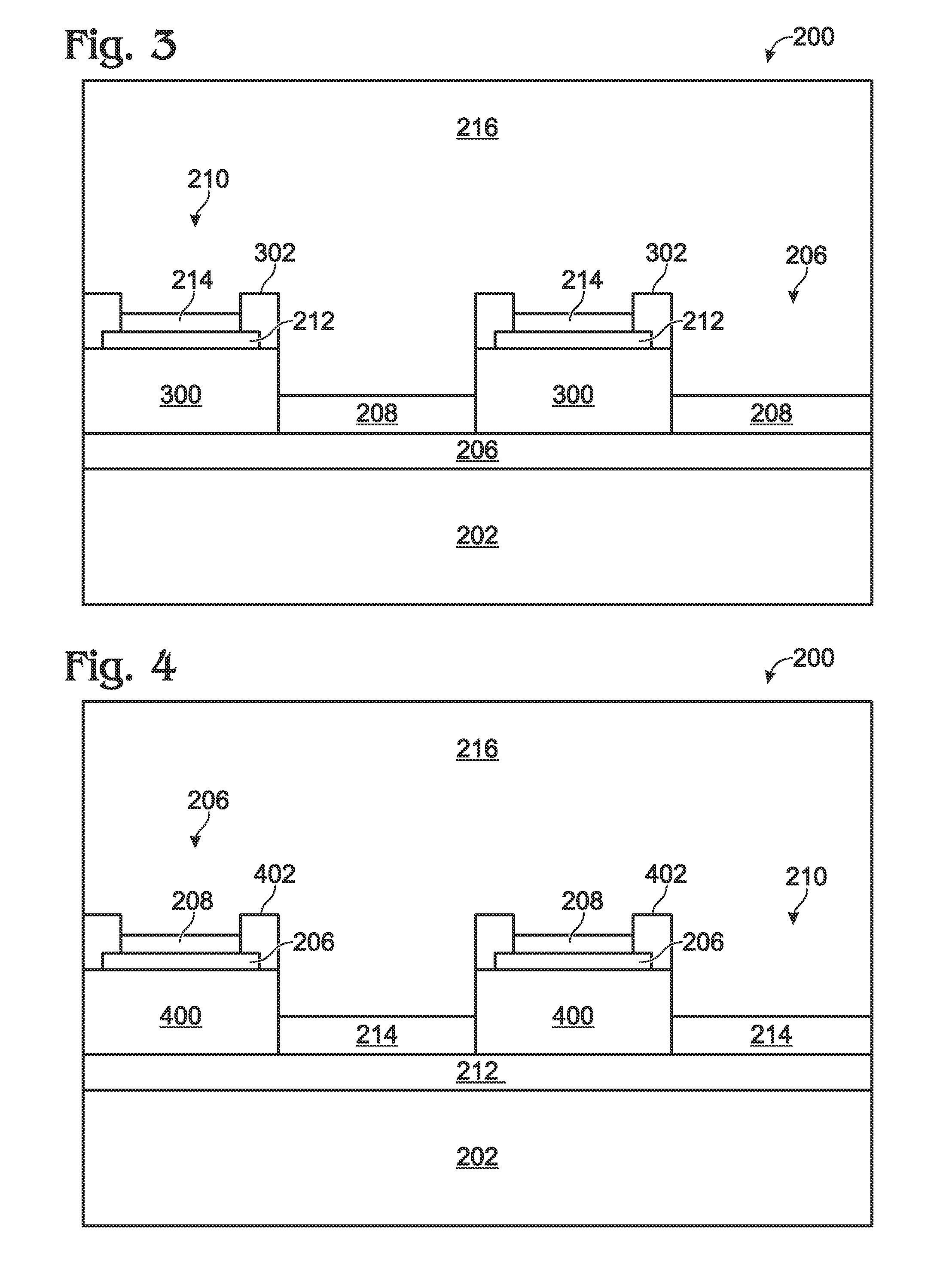Back Contact Perovskite Solar Cell
- Summary
- Abstract
- Description
- Claims
- Application Information
AI Technical Summary
Benefits of technology
Problems solved by technology
Method used
Image
Examples
Embodiment Construction
[0024]FIG. 2 is a partial cross-sectional view of a back contact perovskite solar cell. The solar cell 200 comprises a substrate 202 with a plurality of p-type contacts 204 overlying the substrate. For simplicity, only one p-type contact 204 is shown. Each p-type contact 204 comprises a positive electrode 206 and a p-type semiconductor segment 208 overlying the positive electrode 206. A plurality of n-type contacts 210 also overlies the substrate 202. Again, for simplicity, only one n-type contact 210 is shown. Each n-type contact 210 comprises a negative electrode 212 and an n-type semiconductor segment 214 overlying the negative electrode. A hybrid organic / inorganic perovskite layer 216 overlies the p-type contacts 204 and n-type contacts 210.
[0025]In such a cell 200, the absorption of photons by the hybrid perovskite material 216 is followed by the formation and dissociation of excitons. The separated charges move towards the contact areas, as the nature of the n- and p-type semi...
PUM
 Login to View More
Login to View More Abstract
Description
Claims
Application Information
 Login to View More
Login to View More - R&D
- Intellectual Property
- Life Sciences
- Materials
- Tech Scout
- Unparalleled Data Quality
- Higher Quality Content
- 60% Fewer Hallucinations
Browse by: Latest US Patents, China's latest patents, Technical Efficacy Thesaurus, Application Domain, Technology Topic, Popular Technical Reports.
© 2025 PatSnap. All rights reserved.Legal|Privacy policy|Modern Slavery Act Transparency Statement|Sitemap|About US| Contact US: help@patsnap.com



